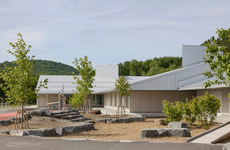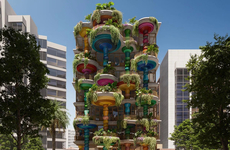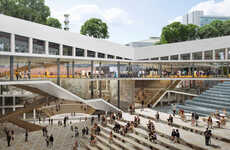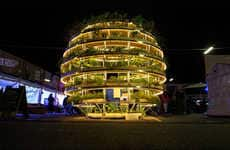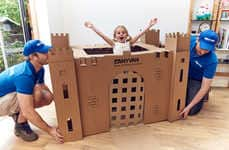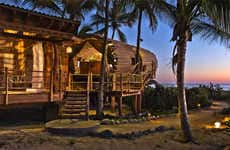
'An Adventure in the Horizontal' Creatively Climbs up a Hillside
Joey Haar — October 4, 2016 — Art & Design
'An Adventure in the Horizontal' is a new building on ETH Zurich's Honggerberg campus.
Built to maximize the space in the small campus on the outskirts of Zurich, Switzerland, the building's architects, Zurich-based Zust Gubeli Gambetti, were faced with a difficult problem. The site for the new building had to be on a rolling hillside, as flattening the hill would be too expensive. The firm's solution, as exemplified by An Adventure in the Horizontal, was the same solution that people have had for hills over thousands of years: stairs.
An Adventure in the Hoizontal is itself shaped like a staircase, allowing it to rise with the incline of the hillside. The building contains 155 rooms for offices, seminars, and lectures across four floors.
Built to maximize the space in the small campus on the outskirts of Zurich, Switzerland, the building's architects, Zurich-based Zust Gubeli Gambetti, were faced with a difficult problem. The site for the new building had to be on a rolling hillside, as flattening the hill would be too expensive. The firm's solution, as exemplified by An Adventure in the Horizontal, was the same solution that people have had for hills over thousands of years: stairs.
An Adventure in the Hoizontal is itself shaped like a staircase, allowing it to rise with the incline of the hillside. The building contains 155 rooms for offices, seminars, and lectures across four floors.
Trend Themes
1. Staircase-shaped Architecture - This trend of staircase-shaped buildings presents opportunities for architects to creatively maximize space in challenging terrains.
2. Adaptive Design - The use of adaptive design in buildings like An Adventure in the Horizontal offers innovative solutions for utilizing uneven landscapes.
3. Vertical Integration - Vertical integration in architectural design allows for the seamless integration of spaces in structures like the staircase-shaped schools.
Industry Implications
1. Architecture - The architecture industry can leverage staircase-shaped designs to overcome spatial challenges and create unique structures.
2. Education - The education industry can benefit from innovative designs like staircase-shaped schools to optimize space and provide functional learning environments.
3. Construction - The construction sector has opportunities to implement adaptive design principles and create buildings that harmonize with natural landscapes.
2.4
Score
Popularity
Activity
Freshness



